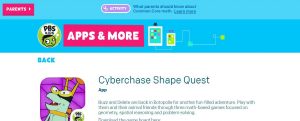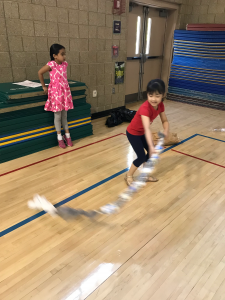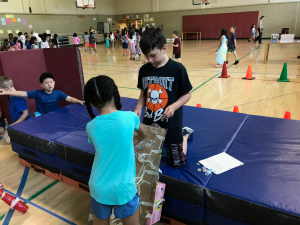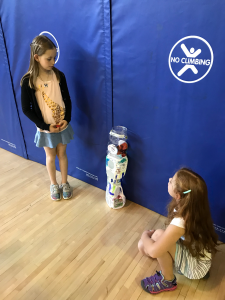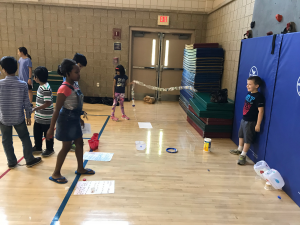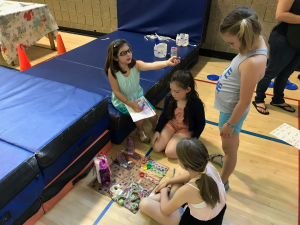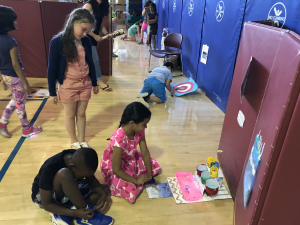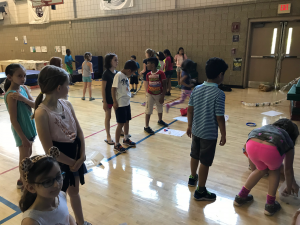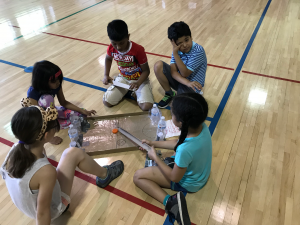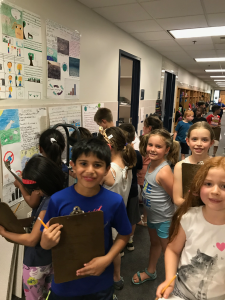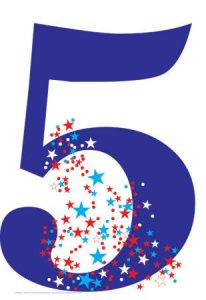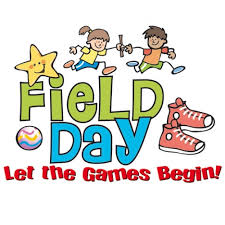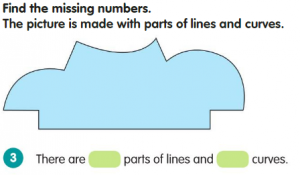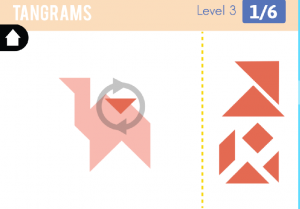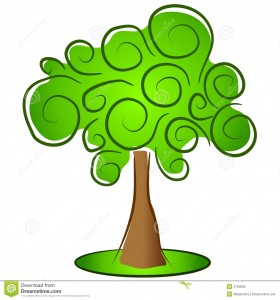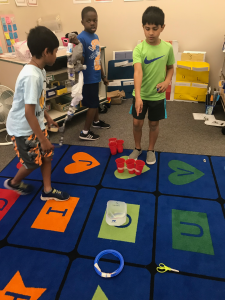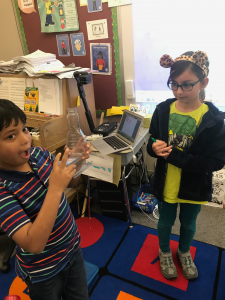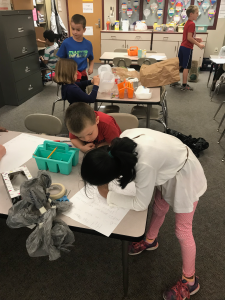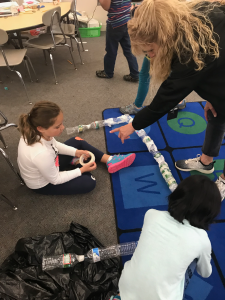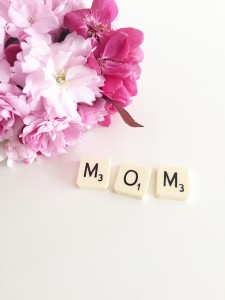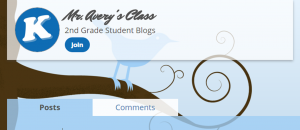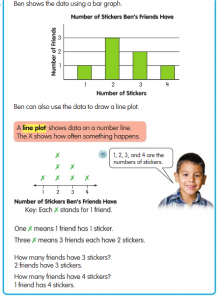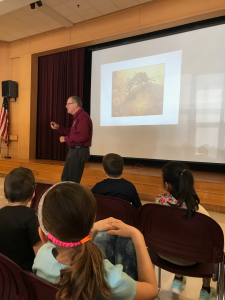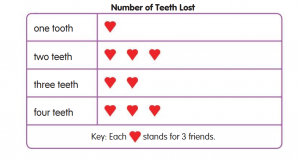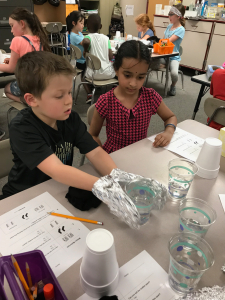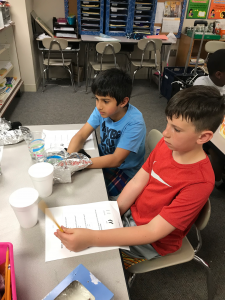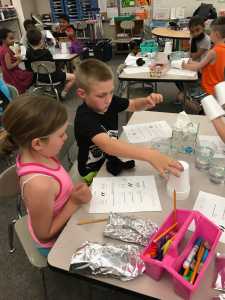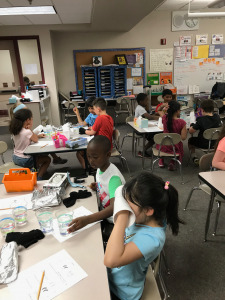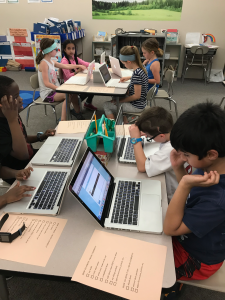Posted by kavery508 | Posted in Uncategorized | Posted on May 28, 2018
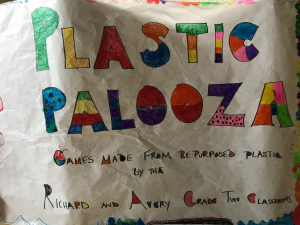 Floral Goes Green was a blast! Students all over the school displayed projects that reflected their learning about plastic’s impact on the planet, and spent the day learning from each other. Students in our class were on-hand near the games they created to explain and share with kids from all grades. Kudos to them on the great job they did!
Floral Goes Green was a blast! Students all over the school displayed projects that reflected their learning about plastic’s impact on the planet, and spent the day learning from each other. Students in our class were on-hand near the games they created to explain and share with kids from all grades. Kudos to them on the great job they did!
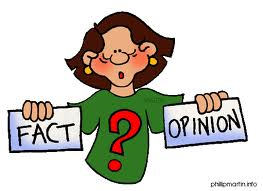 Our opinion writing has taken off! Students are thinking more deeply than ever about their opinions and how to convey them with reasons and explanations. Here are a few from: 1) Matthew, on ‘Why animals should be kept in zoos’; 2) Berlin, on ‘Why Christmas is the best holiday is to celebrate’; and 3) Seth, on ‘Why kids and teachers should have homework’: 1) First, a hurt animal in the wild will not get the attention it needs. For example, a moose attacked by a pack of wolves and left to die will not get helped by anyone. But if it is in a zoo it will be helped. 2) Finally, you get to decorate a Christmas tree with all the magnificent lights. Also there’s always a gorgeous star at the very top of the Tree. It brings your family together with sweet love. 3) Finally, homework helps us remember. If kids didn’t have homework they wouldn’t remember most things they learned yesterday. If teachers didn’t have homework, they wouldn’t remember most of the things they learned. Then they wouldn’t be able to teach them. Awesome work!
Our opinion writing has taken off! Students are thinking more deeply than ever about their opinions and how to convey them with reasons and explanations. Here are a few from: 1) Matthew, on ‘Why animals should be kept in zoos’; 2) Berlin, on ‘Why Christmas is the best holiday is to celebrate’; and 3) Seth, on ‘Why kids and teachers should have homework’: 1) First, a hurt animal in the wild will not get the attention it needs. For example, a moose attacked by a pack of wolves and left to die will not get helped by anyone. But if it is in a zoo it will be helped. 2) Finally, you get to decorate a Christmas tree with all the magnificent lights. Also there’s always a gorgeous star at the very top of the Tree. It brings your family together with sweet love. 3) Finally, homework helps us remember. If kids didn’t have homework they wouldn’t remember most things they learned yesterday. If teachers didn’t have homework, they wouldn’t remember most of the things they learned. Then they wouldn’t be able to teach them. Awesome work!
 This week in math students will be learning to identify 2D and 3D shapes by their properties; to recognize them in figures and models; and to create designs and structures with the shapes of properties in mind. PBS Kids has game apps that let students take advantage of mobile technology to apply math and literacy concepts. In general, the skills taught in grades 2 and 3 match the shows for these grades, such as Cyberchase, Arthur, and Word Girl. If you’re looking for fun ways to keep the learning going this summer, give them a try!
This week in math students will be learning to identify 2D and 3D shapes by their properties; to recognize them in figures and models; and to create designs and structures with the shapes of properties in mind. PBS Kids has game apps that let students take advantage of mobile technology to apply math and literacy concepts. In general, the skills taught in grades 2 and 3 match the shows for these grades, such as Cyberchase, Arthur, and Word Girl. If you’re looking for fun ways to keep the learning going this summer, give them a try!
Here’s pics of us at Floral Goes Green:

